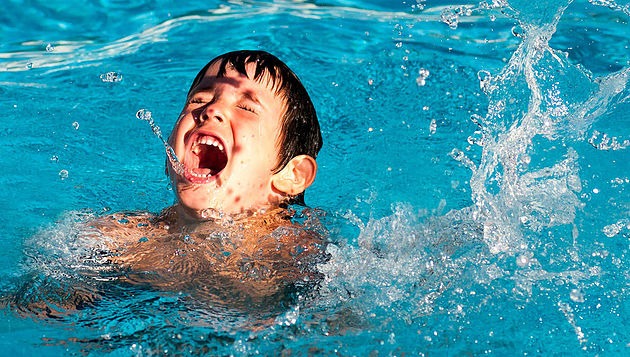
Know what’s happening at home when you’re away
June 8, 2016
10 Reasons Why You Shouldn’t Spank Your Kids
June 9, 2016If you’re like most parents, you probably figure once your child is done swimming or playing in the water, his risk of drowning is over. But “dry” and “secondary” drowning can happen hours after he’s toweled off and moved on to other things. There are steps you can take to keep your child safe.
These types of drowning can happen when your child breathes water into his lungs. Sometimes that happens when he’s struggling while swimming. But it can be a result of something as simple as getting water in his mouth or getting dunked.
It can happen to adults, but it’s more common in kids because of their small size, says Raymond Pitetti, MD, associate medical director of the emergency department at Children’s Hospital of Pittsburgh.
With dry drowning, water never reaches the lungs. Instead, breathing in water causes your child’s vocal chords to spasm and close up after he’s already left the pool, ocean, or lake. That shuts off his airways, making it hard to breathe.
Secondary drowning happens a little bit differently. Your child’s airways open up, letting water into his lungs where it builds up, causing a condition called pulmonary edema. The end result is the same: trouble breathing.
Symptoms of dry drowning usually happen right after any incident in the water. Secondary drowning generally starts later, within 1-24 hours of the incident, Pitetti says.
Both events are very rare. They make up only 1%-2% of all drowning incidents, says James Orlowski, MD, chief of pediatrics at Florida Hospital Tampa.
Symptoms
Dry drowning and secondary drowning have the same symptoms. They include:
Coughing
Chest pain
Trouble breathing
Feeling extremely tired
Your child may also have changes in behavior such as such as irritability or a drop in energy levels, which could mean the brain isn’t getting enough oxygen.
What to Do
If your child has any signs of dry drowning and secondary drowning, get medical help. Although in most cases the symptoms will go away on their own, it’s important to get him checked out.
“The most likely course is that the symptoms are relatively mild and improve over time,” says Mark Reiter, MD, president of the American Academy of Emergency Medicine.
Any problems that do develop are usually treatable if you get medical help right away. Your job is to keep a close eye on your child for the 24 hours after he or she has had any problems in the water.
If the symptoms don’t go away or get worse, take your child to the emergency room, not your pediatrician’s office.
“Your child will need a chest X-ray, an IV, and be admitted for observation,” Pitetti says. “That can’t be done in an office.”
Because there are no drugs for dry or secondary drowning, your child will probably get “supportive care” at the hospital. This means checking that his airways are clear and monitoring his oxygen level. If he’s having severe trouble breathing, he may need to temporarily use a breathing tube.
Prevention
The most important thing parents can do has nothing to do with doctors or the emergency room and everything to do with preventing drowning in the first place.
“Water safety is by far the most important thing,” Reiter says.
Follow these tips to protect your child:
Always watch your child closely when they’re in or around water.
Only let him swim in areas that have lifeguards.
Never let him swim alone.
Enroll yourself and your children in water-safety classes. There are even programs that introduce children 6 months to 3 years of age to the water.
If you have a pool at your home, make sure it’s completely fenced.
Teenagers are more likely to have drowning incidents that are related to drugs and alcohol, so teach your kids about the risks, says Mike Gittelman, MD, co-director of the Comprehensive Children’s Injury Center at Cincinnati Children’s Hospital.
And don’t let your guard down just because the water isn’t deep. Drowning can occur in any kind of water — bathtubs, toilet bowls, ponds, or small plastic pools.
Source: http://www.webmd.com/




